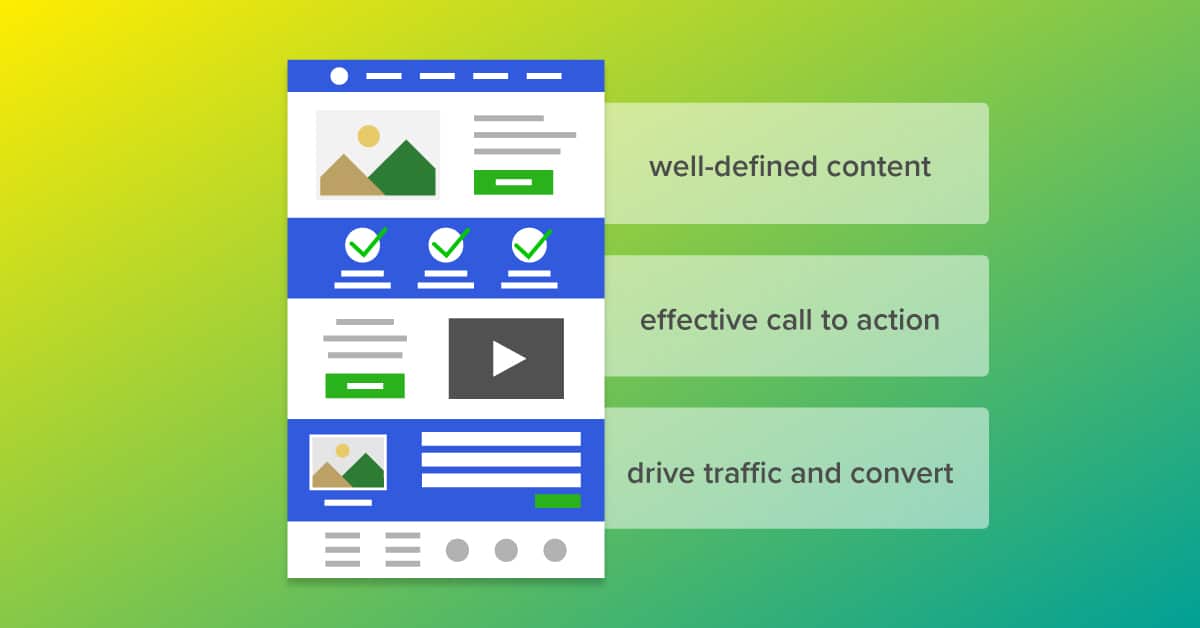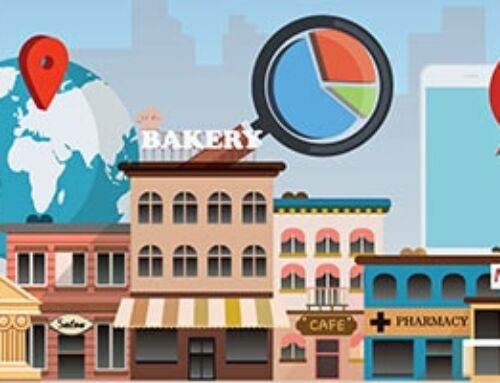
When it comes to educating yourself about digital marketing, you have probably had to add many new vocabulary words to your repertoire to better understand the concepts surrounding successful digital marketing methods and strategies. One term you have probably stumbled upon in this process is landing pages.
Landing pages are an essential addition to digital marketing campaigns as they can work to convert customers quicker than a simple link to a website. If you are interested in converting your audience into customers at a quicker rate, continue reading, and we will tell you all about what landing pages are, what types of landing pages exist, and how your organization can benefit by utilizing them.
What is a landing page?
A landing page is any web page that a consumer has the ability to land on. Though that definition sounds simple, there is more to landing pages than just that. When it comes to digital marketing campaigns, a landing page is a specific page that focuses on a single purpose. A landing page is a way for your organization to better define the promise or content from your digital marketing advertisement in a manner that converts customers. Successful landing pages not only have content related to ads that work to convince potential customers that they need your service, and they also have contact forms to help walk potential customers further into the sales cycle.
Landing pages are an incredible way to convert customers, and at Momentum3, we recommend having multiple landing pages in your marketing arsenal. That way, you can target and drive traffic to your products or services with segmented audience focuses.
What is the difference between a landing page and a home page?
When we initially meet with our clients about their digital marketing campaigns, they are often confused at the initial mention of landing pages. After all, why would they need a landing page when they have a home page? The answer is simple. They help you to convert your customers.
Driving traffic to your homepage is good, but you are less likely to convert your visitors this way. The reason behind that is that your homepage is full of excellent information about your products and services. It probably also has multiple locations listed, details about who your company is, and how you got to where you are today. When you are guiding people via advertising to your homepage, it can be overwhelming for customers to navigate your site to find more information about the information listed in your ad.
Landing pages eliminate the uncertainty that navigating through a website from a home page can bring. It allows one simple and straightforward call to action and will enable you to speak directly to your audience to convert them.
Is there more than one type of landing page?
There are so many different landing pages, and it can be hard to keep up with all of them. So, we decided to break down the top types of landing pages for you and discuss how they can help make your next digital marketing campaign even more successful!
Lead Generation Landing Pages
Lead generation landing pages are created to collect leads by allowing them to fill in their information into a form. This landing page is looking to gather more information about potential clients than just their email addresses, such as their business name, job title, company size, and industry.
This type of landing page is one you utilize when you want to start a conversion funnel. This information will then allow you to discover if a lead is qualified so that you can nurture the prospect to close a deal.
Click-Through Landing Pages
Click-through landing pages are simple form landing pages. Their goal is to further convey details about an offer, allowing you to know the benefits of a product or service to convert a customer to complete a transaction.
When it comes to click-through landing pages, you can think of them as your companies opening act. It warms up your audience so that you can swoop in and convert them.
Squeeze Landing Pages
Squeeze landing pages are incredible tools for demand generation. This type of landing page has one goal, and that is to capture the audience’s email address.
Typically, this is done through a promotional offer on a retail site. For example, a gated page that pops up prompting you to email your email address to receive a discount code, newsletter, ebook, whitepaper, or any other type of content business wants to get in front of their audience.
Sales Landing Pages
Sales landing pages are also known as long-form content landing pages or long-form landing pages. This type of landing page is content rich and helps move a potential customer from a consideration stage into a purchase state. Sales landing pages typically close with a call to action such as download now or buy now and require you to utilize the most persuasive copy you have. Don’t forget to add information like testimonials to your sales landing pages; they are sure to help you convert your visitors.
Infomercial Landing Pages
When you think of the term infomercial, what comes to mind? Maybe terms such as loud and cheesy help you define infomercials, and infomercial landing pages are the same. They talk about problems and solutions, not products or services, while using persuasive storytelling to connect people’s emotions better.
Storytelling is a compelling tactic to engage visitors on an emotional level, letting them know how different their lives would be if they took the action that you want them to take.
Splash Landing Pages
Splash landing pages come before the direction to a home page and allow businesses to communicate important information, such as age verification.
Splash pages are technically a part of your website and can be thought of as a doorman to a building. Your splash landing page greets your customers and requires them to do something to gain access to your website.
Viral Landing Pages
Viral landing pages have one goal, to build brand awareness. These pages may feature games or funny videos, having only a subtle reference to the company behind them.
The hope with viral landing pages is that people will share your link, leading customers to your website. While these customers are there, they will have the opportunity to learn more about your brand in the process.
Microsites
Microsites are most often utilized for large campaigns. These landing pages may have their URL, and more often than not, they have more than just one page to them.
Even though they are more than one page, they are still categized as a landing page because they work with an advertising campaign to drive traffic. An example of a microsite is a movie trailer site. Those are high-traffic sites with more than one page that exist only to promote a movie.
Why do you need a landing page?
As a business owner, you have put a lot of time and effort into building your brand and creating a website representing your organization to the best of its ability. Landing pages help make sure that all of your hard work translates into sales. They drive traffic, improve search engine optimization, all while building your brand.
What characters do successful landing pages have?
-
Successful landing pages help customers zero in on an offer, not just a company.
Though we believe in allowing your customers to learn about the people behind the company name, this information should be left out of landing page content. Successful landing pages do not tell your customers how your organization was formed or where your team enjoys going for happy hour. Successful landing pages are focused only on an offer, such as a product or service.
-
Landing pages that convert iterate focused content that is free of distractions to potential customers.
Successful landing pages should be easy to read and understand. These pages do not need to be flashy; they need to be content-focused and driven. Time magazine’s research dictates that the average person has an attention span of eight seconds. So, as you craft content for your landing page, we suggest that you ensure the information can be digested quickly and effectively. If you choose too flashy of a design, you may find that you are risking some of those precious seconds that should be used to convert customers.
-
Effective landing pages speak to a specific audience and allow customers to access your other marketing channels.
In marketing, either print or digital, you will struggle to effectively speak to anyone when you choose to talk to everyone. This is why landing pages are a fantastic tool for your organization. They allow you to effectively speak directly to your target audience to convert them to a customer effectively.
As marketers, we love using landing pages as a conversion tool. They drive traffic, continually optimizing, tweaking, updating, and testing them to ensure that we are consistently bringing our best marketing foot forward.
If you would like to learn more about landing pages or speak to a digital marketing expert, you can do so by clicking here to fill out a contact form.




